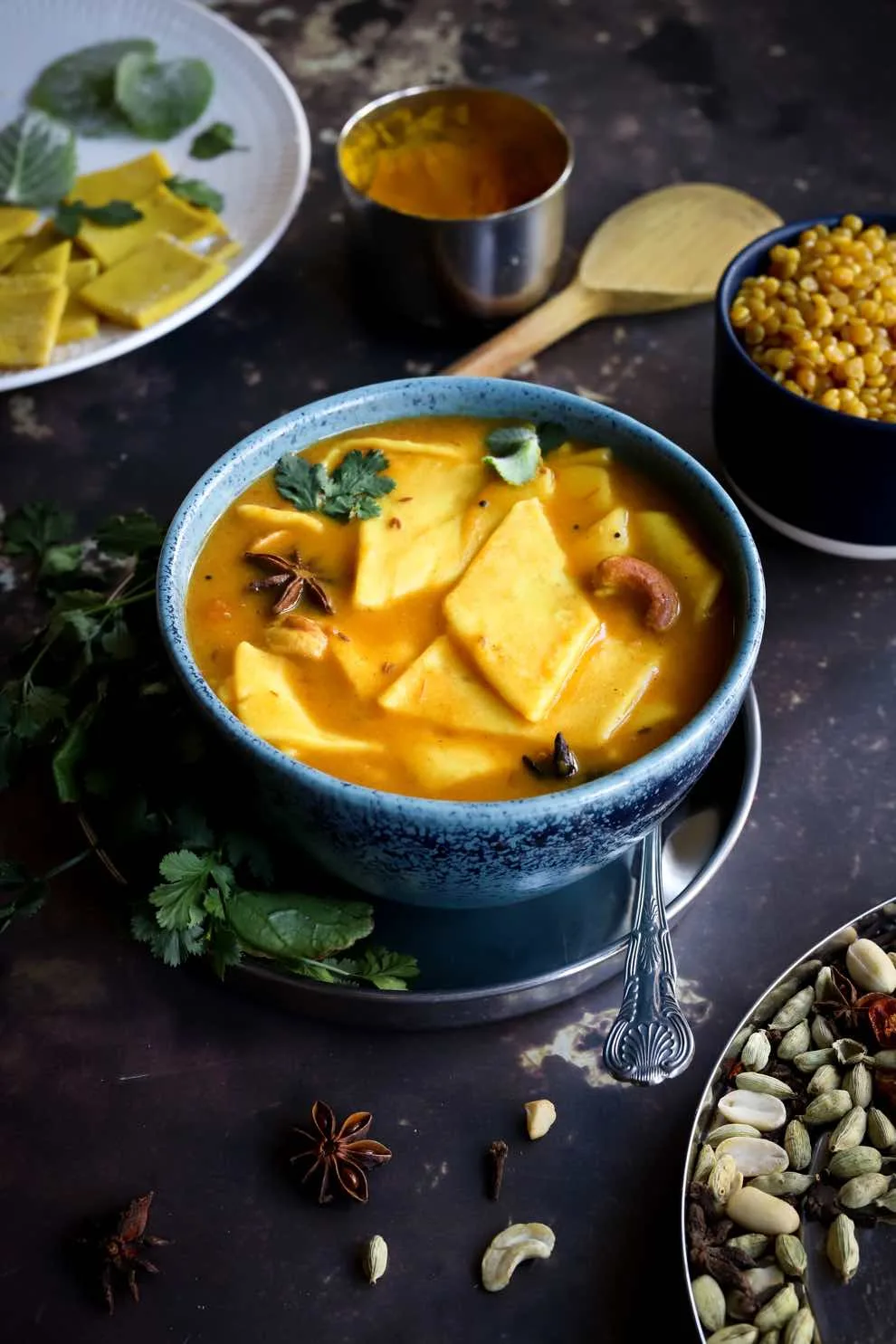Paired with rotli, stuffed vegetable curry and rice, it’s always been our staple Sunday lunch.
What is Gujarati Daal?
Gujarati daal is made with oily tuver daal (arhar), also known split pigeon peas. They are dried and coated in a slick of oil to preserve them for months, even years. This makes tuver the ultimate pantry ingredient to have on standby when the contents of your fridge is looking sparse.
Tip: Always wash your daal!
Always wash daal to rinse away oil. As a child my mother would keep me occupied by placing a bowl of tuver daal in warm water in front of me so I could swish and swoosh the oil away. It was the ultimate sensory activity for a bored little monkey like me, and something I still find utterly cathartic today. Unlike many other regional Indian daal recipes, you pass the mixture through a sieve. Next, add the golden liquid to tempered spices, nuts and tomatoes.
Important!
Simmer it low and slow. Be heavy-handed with the seasoning: lemon juice, jaggery and salt are your friends because they are what gives Gujarati daal life. Serve as part of a larger meal or simply in a bowl with boiled rice. My favourite part are the simmered peanuts and cashews which become extremely tender and melt in your mouth.
How to make One-Pot Daal Dhokli
Enter Daal Dhokli. A hand-rolled, wheat flour and chickpea flour pasta that’s dropped into a simmering pot of daal. It’s more of a stew than a soup and considered a comfort food by many. I find adding a little chickpea flour to the Dhokli dough gives the cooked noodles a welcome firmness so they hold their shape in the daal. If you like your pasta al dente, give it a go. This is a dish that’s unique to western India and a true food hero. My mother always cut out pretty diamond-shapes. Although, every family, from Maharashtra through to Gujarat and Rajasthan, have their own unique way of making it.
Flavour star: Ajwain
Daal Dhokli is a true one-pot wonder. It’s packed with mouth-puckering hot, sweet and sour flavours, good protein and comforting carbs. The spicing is gentle and aromatic with star anise, cinnamon, cloves and ajwain-flecked pasta. The yellow colour of the Dhokli predominantly comes from turmeric but the flavour is unequivocally down to the addition ajwain seeds. Having said this, if I have fresh ajwain leaves to hand, I add them to the dough for unbeatable peppery freshness. Daal Dhokli is often made with leftover daal. Simply add water, more lemon, salt and jaggery, bring to a rolling boil and drop in the pieces of Dhokli. Because who said leftovers can’t be special?
More Ideas for One-Pot Daal Dhokli
Add 250g fresh or frozen peas towards the end for a version called Matar Dhokli.Serve with steamed rice for a double-carb comfort feast or add in a few handfuls of spinach leaves if you like plenty of greens.Finally, my favourite way to enjoy it is with a swirl of thick Greek yoghurt and fresh coriander chutney.
Love Sanjana Share this recipe







